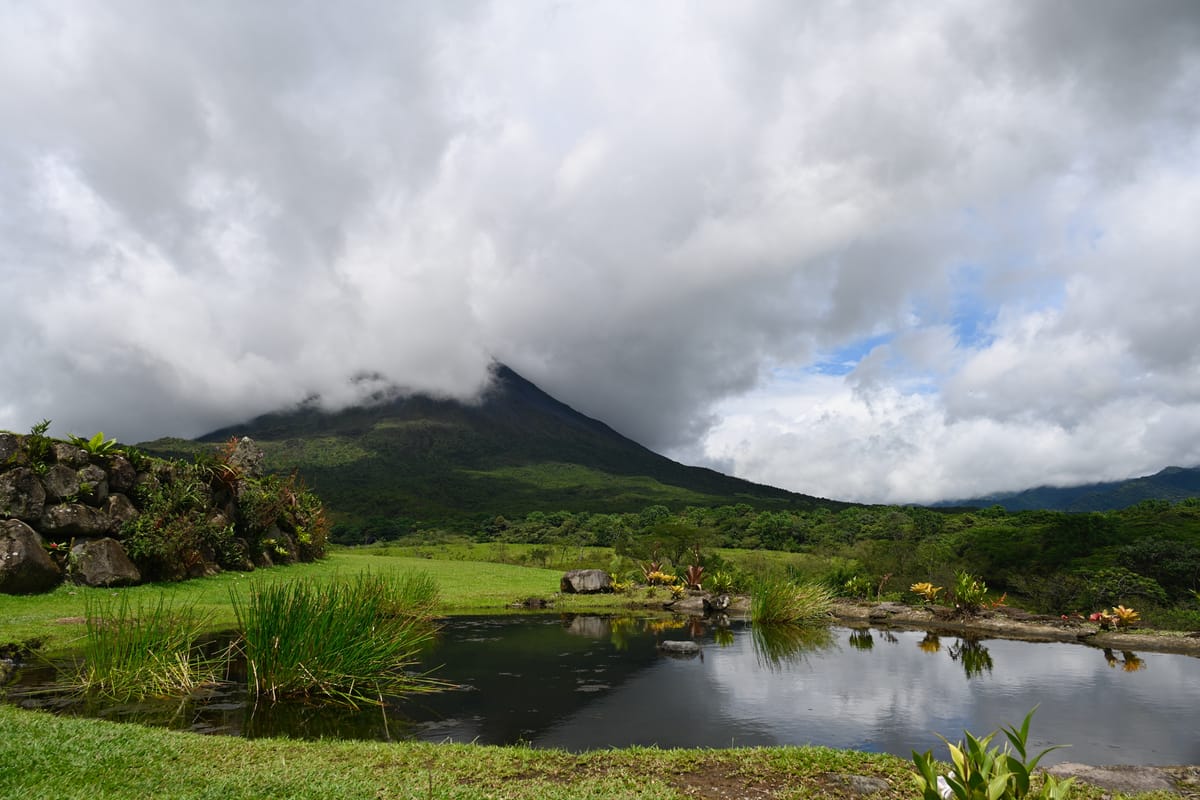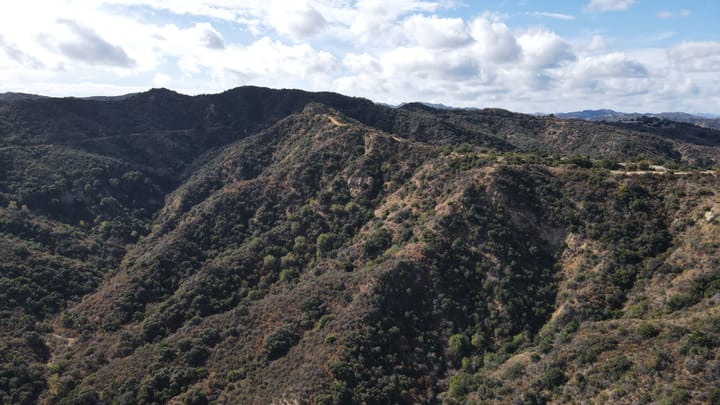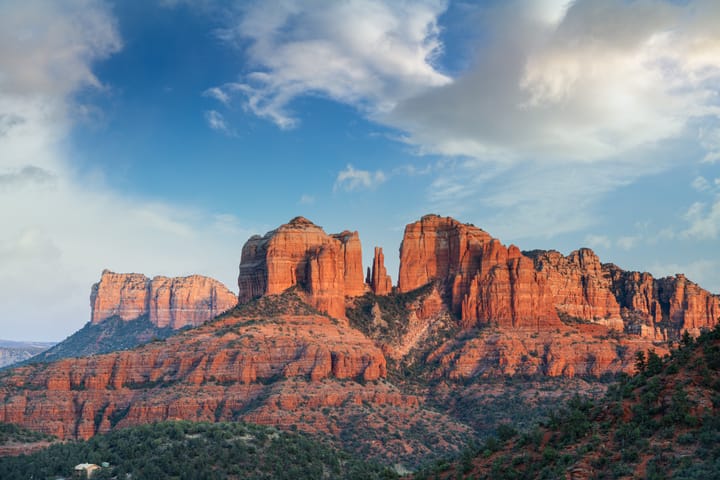A Visual Journey to Arenal, Costa Rica
Experience the beauty of Arenal Volcano, a majestic natural wonder in Costa Rica. This post offers insights into its rich biodiversity, activities for visitors, and tips for exploring the lush landscapes and stunning views the region offers.

Introduction
Arenal Volcano, towering over the lush rainforest canopy, is an iconic landmark in Costa Rica. Arenal is Costa Rica’s most active volcano, and it has been spewing lava and ash almost constantly since 1968. The volcano is a popular tourist destination, and it is a significant feature of the surrounding Arenal region.
The Arenal region is located in northwestern Costa Rica, and it is characterized by a tropical climate with warm temperatures and abundant rainfall. The rainy season typically runs from May to November, and the dry season is from December to April. The average temperature in Arenal is around 70 degrees Fahrenheit (21 degrees Celsius) year-round.
Arenal Volcano: A Majestic Natural Wonder
Arenal Volcano is a stratovolcano, a type of volcano that is conical in shape and is made up of layers of lava, ash, and rock. Arenal is approximately 5,419 feet (1,651 meters) tall, and it is part of the Central Volcanic Range, which stretches along the Pacific coast of Costa Rica.
Arenal was dormant for thousands of years before erupting in 1968. Since then, the volcano has been in a state of near-constant activity, with frequent eruptions and periods of lava flow. The most recent period of significant activity began in 2008 and lasted for several years. Today, Arenal is less active, with only occasional ash plumes and fumarole activity.
Arenal is one of several volcanoes that make up the Central Volcanic Range. This volcanic belt is part of the Pacific Ring of Fire, a zone of geological instability that encircles the Pacific Ocean. The Ring of Fire is responsible for a large percentage of the world's earthquakes and volcanic eruptions.
The Lush Landscape: Flora and Fauna
The Arenal region is home to a rich variety of plant and animal life. The rainforests around the volcano are teeming with bromeliads, orchids, ferns, and other tropical plants. The Arenal Volcano National Park protects a significant portion of this rainforest, and it provides habitat for a variety of wildlife species.
Some of the wildlife that can be observed in the vicinity of the volcano include:
- Monkeys: Several species of monkeys can be found in the Arenal rainforest, including spider monkeys, howler monkeys, and white-faced capuchin monkeys. These primates play an important role in the rainforest ecosystem by dispersing seeds and pollinating plants.
- Sloths: Two-toed sloths and three-toed sloths are both common inhabitants of the Arenal rainforest. These slow-moving mammals spend most of their time hanging upside down from trees, eating leaves.
- Toucans: Toucans are brightly colored birds with large, distinctive beaks. They are common in the Arenal rainforest, and their loud calls can often be heard echoing through the trees.
- Quetzals: The resplendent quetzal is a national bird of Guatemala and a symbol of Costa Rica. These beautiful birds have long, iridescent tail feathers that can grow up to three times the length of their body. Quetzals are difficult to spot in the rainforest, but they are a prized sight for birdwatchers.
- Jaguars: Jaguars are the largest cats in the Americas, and they are found in the Arenal rainforest. These solitary predators are at the top of the food chain, and they help to regulate populations of prey animals.
- Coatis: Coatis are long-snouted mammals that are related to raccoons. They are social animals that live in groups of up to 30 individuals. Coatis are omnivorous, and they feed on a variety of fruits, insects, and small animals.
- Pizotes (collared peccaries): Collared peccaries are small, pig-like mammals that are found in the Arenal rainforest. They are social animals that live in groups of up to 20 individuals. Collared peccaries are an important food source for jaguars and other predators.
- Morpho butterflies: Morpho butterflies are large, brightly colored butterflies that are found in the Arenal rainforest. Their wings are iridescent blue or purple, and they shimmer in the sunlight. Morpho butterflies are important pollinators, and they help to reproduce many of the rainforest's plants.
The biodiversity of the Arenal region is vital to the health of the rainforest ecosystem. Plants provide food and oxygen for animals, while animals help to disperse seeds and pollinate plants. Unfortunately, this biodiversity is threatened by habitat loss, deforestation, and climate change. Conservation efforts are underway to protect the Arenal rainforest and its inhabitants.
The Pond: A Mirror of the Sky and Forest
The pond in the foreground of the image is likely a small, freshwater habitat that plays a vital ecological role in the Arenal region. These ponds provide essential drinking water for a variety of wildlife species, including birds, mammals, and amphibians. They also serve as breeding grounds for frogs, insects, and other aquatic creatures.
The still water of the pond acts as a mirror, reflecting the beauty of the surrounding rainforest and the sky above. This reflection adds depth and dimension to the scene, and it helps to create a sense of tranquility. The presence of the pond also contributes to the overall biodiversity of the area by providing a habitat for aquatic plants and animals.
Climate Patterns: Understanding Weather Near the Volcano
The Arenal region experiences a typical tropical climate with warm temperatures and abundant rainfall. The rainy season typically runs from May to November, and the dry season is from December to April. However, the presence of the volcano can influence local weather patterns.
For example, areas on the windward side of the volcano may receive more rainfall than areas on the leeward side. Additionally, the volcano can sometimes create its own cloud cover, which can obscure the view or bring sudden showers.
Tips for Visitors on the Best Times to Experience Clear Views
For visitors hoping to experience the most breathtaking views of Arenal Volcano, the dry season (December to April) is generally the best time to visit. During this time, there is less cloud cover, and the skies are often clear. However, it is important to remember that the volcano is still active, and there is always a possibility of ash plumes or volcanic activity that could obscure the view.
Here are some additional tips for visitors:
- Visit early in the morning: Mornings tend to be clearer than afternoons, so plan your hikes or sightseeing for earlier in the day.
- Be flexible with your schedule: Weather conditions can change rapidly in the rainforest, so be prepared to adjust your plans as needed.
- Pack for all types of weather: Bring rain gear, sunscreen, and a hat, regardless of the time of year you visit.
Tourism and Recreation: Activities and Experiences
The Arenal region is a popular tourist destination, and there are a variety of activities and experiences available for visitors. Some of the most popular activities include:
- Hiking: There are numerous hiking trails in the Arenal Volcano National Park, which offer stunning views of the volcano and the surrounding rainforest.
- Hot springs: The Arenal region is home to a number of natural hot springs, which are heated by the geothermal activity of the volcano. Soaking in the hot springs is a relaxing way to enjoy the beauty of the area.
- Zip-lining: Zip-lining is a popular adventure activity that allows visitors to soar through the rainforest canopy. This is a great way to experience the rainforest from a unique perspective.
Guidelines for Safe and Environmentally Responsible Tourism
When visiting the Arenal region, it is important to be a responsible tourist. Here are some tips:
- Stay on designated trails: This helps to protect the delicate rainforest ecosystem.
- Pack out what you pack in: Do not leave any trash behind.
- Respect wildlife: Observe animals from a distance and do not try to feed them.
- Support sustainable businesses: Look for hotels, lodges, and tour operators that are committed to sustainability practices.
Conclusion
Arenal Volcano is a place of awe-inspiring beauty and raw power. The combination of the majestic volcano, the lush rainforest, and the tranquil ponds creates a truly unforgettable landscape. By following sustainable tourism practices, visitors can help to ensure that this special place is preserved for future generations.




Comments ()